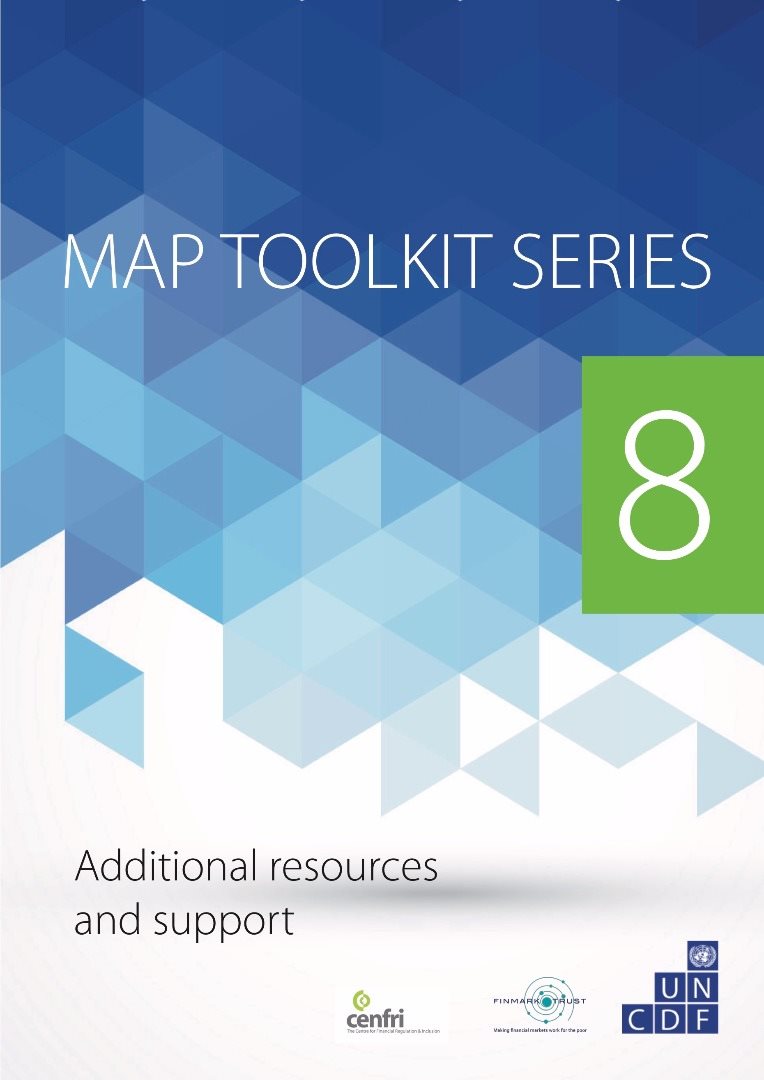Partnering for a common purpose
The MAP framework has been developed by UNCDF in partnership with FinMark Trust and Cenfri and is intended to become a public good that can advance the global financial inclusion agenda.
Who is the audience for the MAP toolkits?
The toolkits are directed primarily at the consultant team that will conduct the MAP diagnostic exercise in-country, but are equally relevant for those who will oversee the diagnostic exercise, including representatives from financial regulators and supervisors, locally established (i.e. in-country) committees, staff members from donor/funding agencies and contracted service providers.
The toolkits will also be of use to other stakeholders who want to understand the MAP process and diagnostic methodology.
How should you work with the toolkits?
Toolkit 1 is designed to provide general background to and an overview of the MAP process, and touches on the various outputs and outcomes of the MAP diagnostic exercise and stakeholder engagement. It allows the reader to get a sense of the different parts of the MAP process and, importantly, how they t together.
The other toolkits (Toolkits 2–7, inclusive) deal in detail with different aspects of the MAP process, while Toolkit 8 is a repository of useful resources. The toolkits are designed so that the reader can work sequentially through them, or can choose to work with only the toolkit/s of interest.
While the MAP process and the various steps associated with key processes that make up the diagnostic exercise and stakeholder engagement are based on research in a number of pilot countries to date, the process as it unfolds in- country is bound to be unique, to some extent, to that context. This, plus the complexity of the process, requires the practitioner to:
-
Keep an open and inquiring mind
-
Maintain conceptual clarity as to where in the wider MAP process you are.
-
Keep returning to the MAP research hypotheses (see more about these in Toolkit 1, and then in subsequent toolkits) and testing them against the empirical evidence/data gathered.
-
Maintain the balance between the detail of the research and the bigger picture.
-
Maintain close contact with the various stakeholders and financial services providers to ensure that the research is grounded within the country context.
